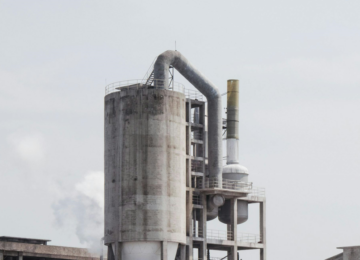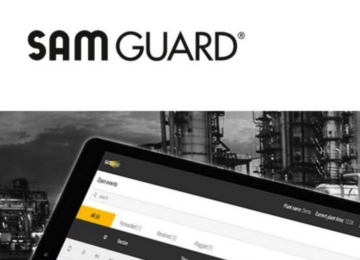November 29, 2022
By: Isabell Bücher
Digital Transformation is Key to Innovation Leadership in Chemical Industry
Decades ago, chemical producers were among the first to ride the wave of digital transformation, integrating data into their R&D teams and computer assistance into the design of their facilities. The pace of digital adoption slowed after the initial burst of enthusiasm, but the impact of COVID-19 accelerated it once more. One survey found that the number of chemical manufacturing leaders who expect revolutionary technological change within the next three years jumped from 31% in 2019 to 66% in 2021.
The pandemic required chemical plants to apply technology to cope with the exigencies of a fractured supply chain and support a workforce that shifted to remote, while still responding to rapidly fluctuating customer demands. Industry leaders understand that they need to not merely implement digital solutions to identify and fix individual problems or pieces of equipment, but deploy digital tools that can help them accomplish business strategies. Plants are using digital transformation to establish flexibility and across-the-board collaboration.
Digital transformation is the primary strategic concern for 64% of chemical CEOs for the next two years, above innovation, reducing costs, or protecting cash flow. Chemical plants are investing in machine learning (ML)-powered data analytics applications such as predictive maintenance, predictive monitoring, and digital twins, using Industrial Internet of Things (IIoT) devices to help the entire plant communicate internally and externally. These tools empower plant managers to cut downtime, reduce costs, stimulate innovation, and ultimately boost production quantity and quality.
The Opportunities of the New, Globalized Reality
Chemical plants are competing within globalized markets. Pre-pandemic, these markets were fueled by skyrocketing demand in Asia for imported chemicals, thanks to the explosion of the middle class demanding more luxury products. This opened up new avenues for growth for European and North American players at a time when their home markets are stagnating.
But in the last few years, market trends have changed immensely. Today, digital transformation in plants in the Asia-Pacific region have outpaced those in Europe and North America. Asia-Pacific thought leaders are more concerned with the strategic opportunities presented by digitalization, while European and North American executives are still generally focused on the operational improvements and cost reductions it can offer.
The landscape has changed for chemical plants. COVID-19 stimulated requests for small-batch, customized chemicals, and triggered rapid changes in customer needs as lockdowns came and went. Chemicals companies recognize the need to innovate fast and pivot faster in order to keep up with customer demand, which skyrocketed during the pandemic. The collapse of the global supply chain highlighted the need for improved visibility, while the last couple of years saw consumers raise their standards for product tracing and sustainability across all verticals. Since most products begin with chemical formulations, this ratchets up the pressure on chemical plants to improve their quality assurance and tracking capabilities.
A Data-First Approach
Industry leaders recognize that data is the common solution to all these challenges. Data promises to expedite collaboration between IT, including IIoT, AI, and advanced analytics, and operations technology (OT), including the control and automation technologies supporting operations, additive manufacturing, advanced materials, and robotics.
Data feeds from smart sensors, like those captured by SAM GUARD’s AI-powered system, can identify patterns to predict and diagnose possible breakdowns. Smart equipment, like Precognize’s predictive monitoring platform, can send messages to plant operators about maintenance updates, potential breakdowns, and parts ordering and delivery schedules. All this enables manufacturers to minimize scheduled or reactive repairs and instead focus on predictive maintenance.
Executives are increasingly investing in technologies for predictive monitoring, cloud computing, robotics, smart sensors, and big data and analytics, all of which help plants to plan for the near and distant future.
Wide-reaching impact
With more than 20 million employees and revenue of $4.7 billion in 2021, the global chemical industry is the backbone of agriculture, automotive, construction, pharmaceuticals, and countless other industries. Its success in digitizing, therefore, has ripple effects across economies around the world.
Smart, data-powered systems form a real-time database of knowledge sets across the company, creating space for departments or plants across the world to benefit and learn from the problems or successes in predictive maintenance, performance optimization, and facility designs. With this high-resolution overview of plant activity, managers can enjoy control over their plant and its operations, and be able to adjust more quickly and accurately as manufacturing or supply chain issues continue to arise.
As they continue to use software like Precognize’s SAM GUARD to crunch OEE calculations and get an overview of their plant’s operations, they have come to understand how sorely they need the benefits that come with digitization: reduced costs, improved production levels, new standards of operational excellence, and, most importantly, an atmosphere conducive to innovation. The price of not embracing the transformation, they’ve seen, is missing out on new markets that are needed for their businesses to thrive.





